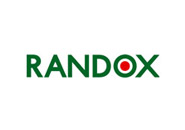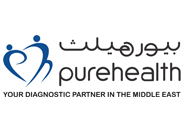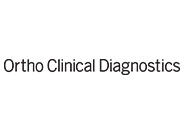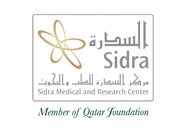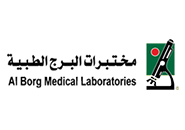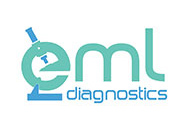Multi-Drugs Resistant Organisms: Alarming Threat for Infectious Disease Management
By Tri Wibawa, Department of Microbiology, Faculty of Medicine, Public Health, and Nursing, Universitas Gadjah Mada, Yogyakarta, Indonesia
Infectious diseases are illness involving two organisms: a human being as a host and a microorganism as a causative agent. To manage infectious diseases doctors must consider both, otherwise it will not address all the biological characteristics of infectious diseases. Current approach of infectious diseases management is using antimicrobial agents to eradicate pathogens. The aims of antimicrobial agent administration are to eradicate or decrease the pathogens concentration below dose of infection. The microbe should be killed by drugs, which are available in the market. However, there are huge accumulated data of pathogens resistance against antimicrobial agents. In addition, the antimicrobial agent effect is influenced by the characteristic of the patients, since its administration does not mean the drugs will be able to reach the target organ, where the microbes are present, properly.
Mutation of the microbes is a random event, which eventually results in the change of the entire characteristics of the microbes, which is more exaggerated by the horizontal gen transfer. For a long time, it has been known that these mechanisms are responsible for the rise of antimicrobial resistance in microbes, though it is not uniformed in bacteria, fungus, and viruses (Richardson, 2017). A human as a host has been documented with genetic variation also. However, direct evidence of interaction between the two events of evolution in the microbes and humans may not yet be conclusive.
Multi drug resistant organisms (MDRO), a technical definition that is not uniform, refers to microbes that are resistant to many antimicrobial agents from different classes and inhibitory mechanisms. MDRO infections have clinical manifestations that are like infections caused by susceptible pathogens, with an exception in several cases. Options for treating patients with MDRO infections are often extremely limited, because of the shortage of antimicrobial agents left. On the other hand, the pipeline of antimicrobial invention has been in a droughty condition. It will result in increased lengths of stay, costs, and mortality. All together it will produce an interflow of infectious diseases management impediments (CDC, 2006).
There are two issues of MDRO management in the healthcare setting, containment for its transmission and treatment for infected patients. Containment of the MDRO transmission includes the community and healthcare associated transmission. Transmission of MDRO is a big concern since, by nature, the genetic determinants of drug resistance can be transmitted from bacteria in the various genus and species. It means that if we have extended-spectrum beta-lactamases (ESBL) producing Escherichia coli in the community or healthcare, we may expect that the ESBL associated genes spread to other Enterobacteriaceae in the same region. The same situation occurs in methicillin resistant Staphylococcus aureus (MRSA), vancomycine resistant Enterococci (VRE), or carbapenem-resistant enterobacteriaceae (CRE) cases (Reinheimer et al., 2016).
Multifaced approaches are needed to contain the MDRO transmission in the healthcare setting (Backman et al., 2011; Barnes et al., 2014). Current recommendation for containment of the MDRO transmission includes several strategic planes i.e.: implementing antibiotics stewardship, focus on infection prevention fundamentals, enhance the role of microbiology laboratory, minimise the use of invasive medical devices, and enhancement of environmental cleaning and disinfection strategies. Antibiotics stewardship is a systematic programme that aims to ensure the prudent antibiotics prescription in bacterial infection cases. This will result in the reduction of selection pressure for bacteria that will eventually prevent the emerging of MDRO. Infection prevention fundamental for MDRO is related with the contact precaution procedure implementation, such as: hand washing and hygiene. One of the most important factors is to make sure that the infection prevention programme is in place and implemented. Microbiology laboratory is the unit that can detect the presence of MDRO in the hospital. It is always a case that prompts notification to the infection control officers, and clinicians will help to contain MDRO transmission. Minimisation of invasive medical device is another key factor of MDRO containment, through the daily basis review of the necessity of medical device use, such as: central line and urine catheters.
Implementing the MDRO transmission prevention programme is challenging. Factors that may contribute to the failure of such strategic plans are: poor human resource education and training (Dumyati et al, 2017); lack of involvement and communication among clinicians, nurses, infection control officers, microbiology laboratory, and healthcare management in implementing the programme; lack of surveillance infrastructure and implementation, including active surveillance culture to identify patients who are colonised with a targeted MDRO; monitoring of MDRO transmission base on the positive culture results of patients, which may not reflect the real transmission and circulation of MDRO (CDC, 2006).
Treating a MDRO bacterial infection case is challenging. This problem may be correlated with the situation that several — if not all — classes of antibiotics are resistant. There is limited choice for clinicians to kill bacteria by using common antibiotics. Although antibiotics is not the only answer, the effectivity of nutrition/energy balance, maintaining immune-protective barrier, preserving the flora normal, and other immunological intervention are not as effective as antimicrobial approaches.
One of the issues of antibiotics therapy for MDRO is whether to use monotherapy or combination of several antibiotics. It is controversial and inflicts debates from experts. The favouring opinion to the combination therapy is based on several considerations, such as: there is an in vitro and animal data that several antibiotics may have synergism effect to kill bacteria; it is a reasonable approach to prevent resistance of bacteria against other antibiotics; and it also increases the probability of appropriate empirical coverage. On the other hand, experts prefer to recommend antibiotic monotherapy based on several reasons: the cost, toxicity, and antagonism between combined antibiotics; studies combined different antibiotic combinations, which is not able to show the efficacy of specific antibiotic combination; and patients included in RCTs are not representative of the patient population seen in general practice (Paul and Leibovici, 2013). Furthermore, there is no comprehensive meta-analysis study that truly favours combination therapy.
However, it was interesting that the combination antibiotics therapy has been prescribed, at least occasionally, in 114/115 (99.1 per cent) hospitals, in France, Greece, Italy, Slovenia, Spain and selected hospitals in the U.S., which were involved in a cross-sectional, Internet-based questionnaire survey. It seems that combination therapy was the preferred treatment strategy for infections caused by carbapenem resistant Gram-negative bacteria (CRGNB) among hospital representatives, even though high-quality evidence for carbapenem-based combination therapy is lacking (Papst et al., 2018).
The controversies of antibiotic treatment in MDRO bacterial infected patients indicated that the problem of MDRO is obvious. The best approach must be a pre-emptive action to prevent generation and transmission of MDRO in the society and healthcare facilities. However, the three steps of MDRO check points e.g.: prevent generation, containment of transmission, and treatment of the patient is a vicious circle of antibiotics resistant. We need comprehensive action at every step of the way.








